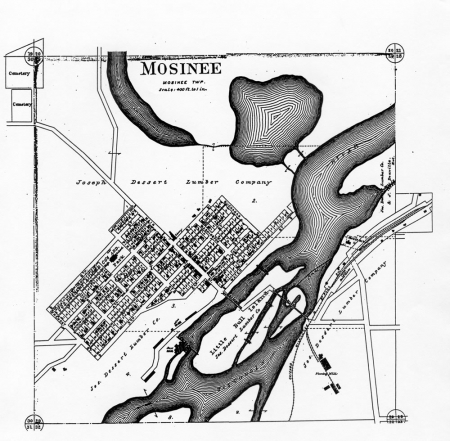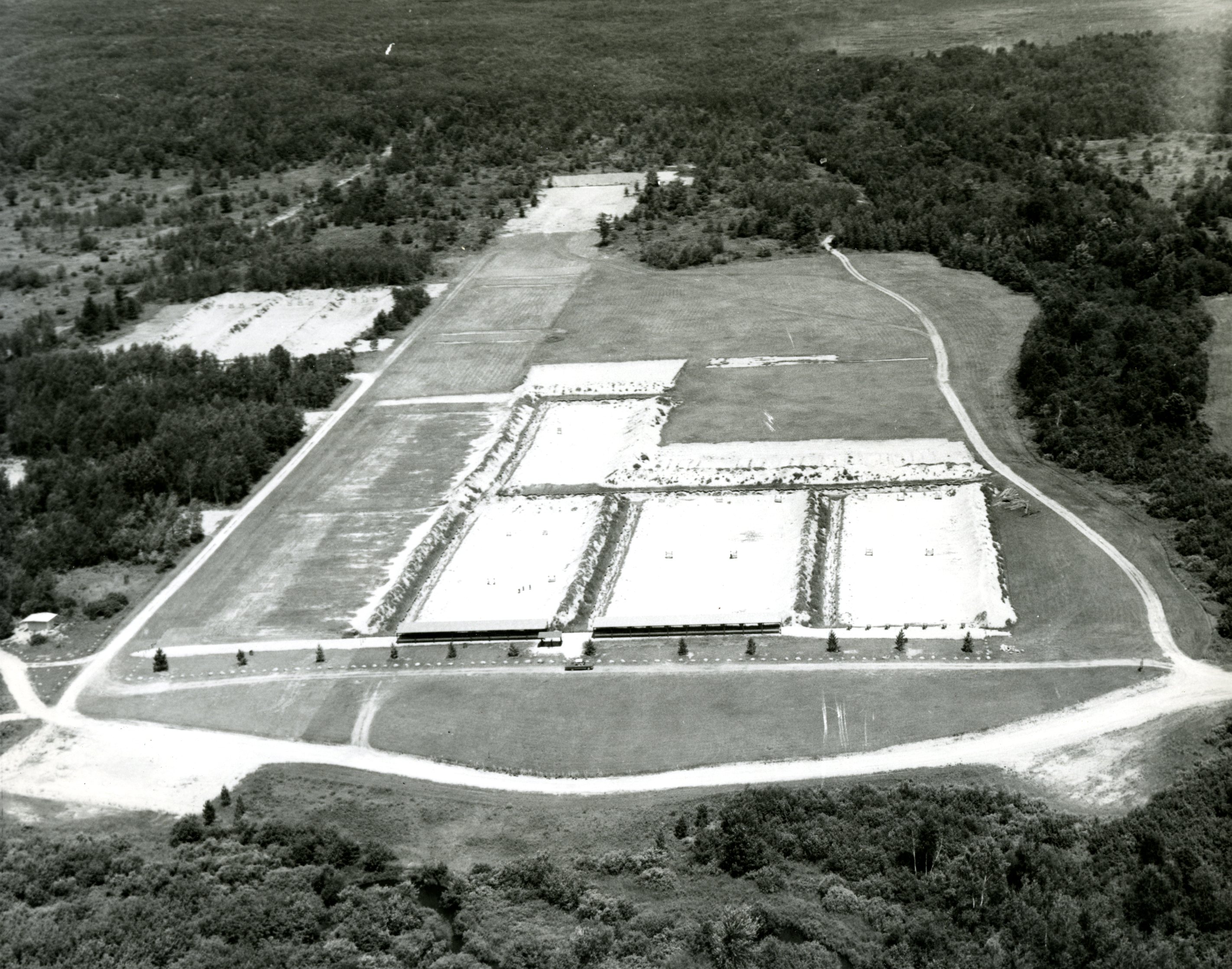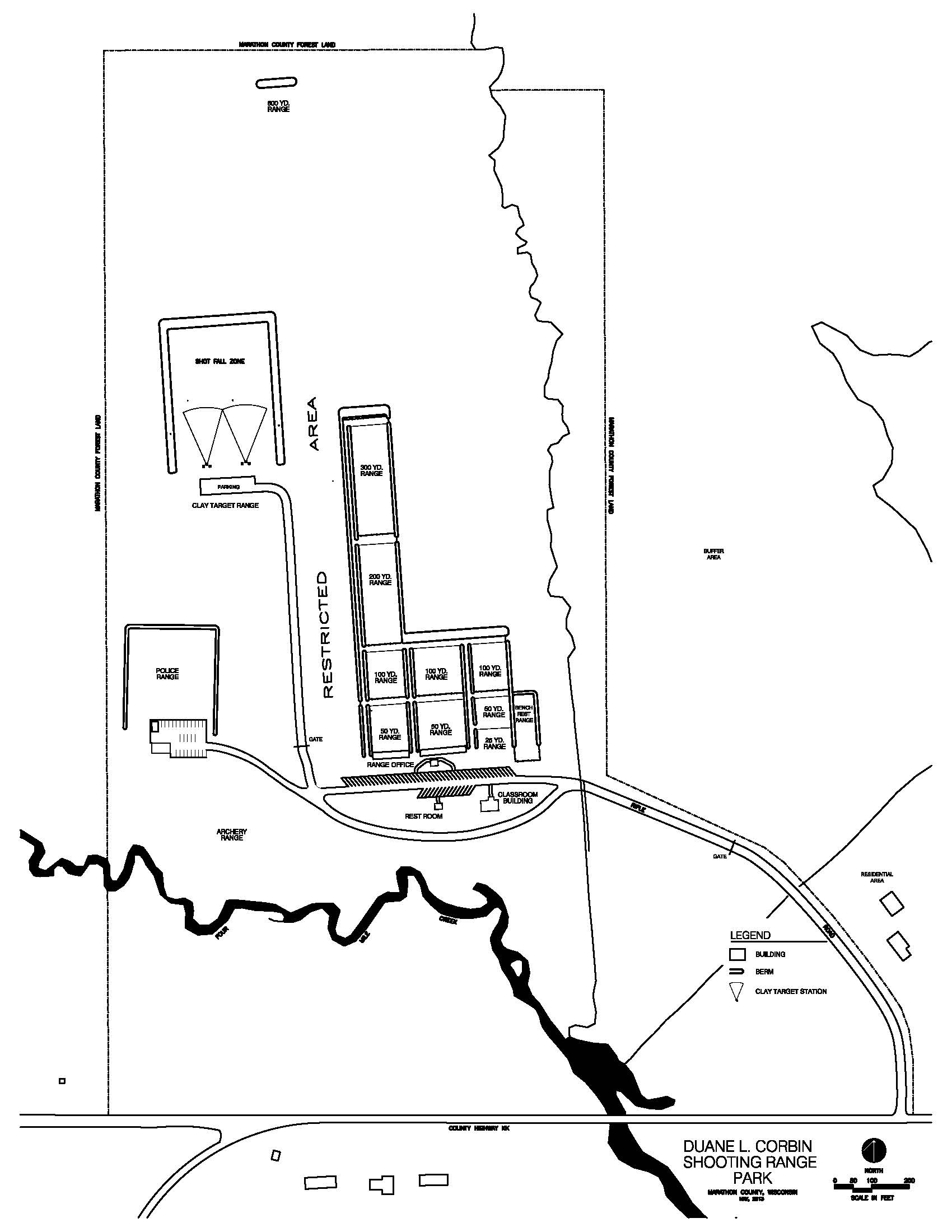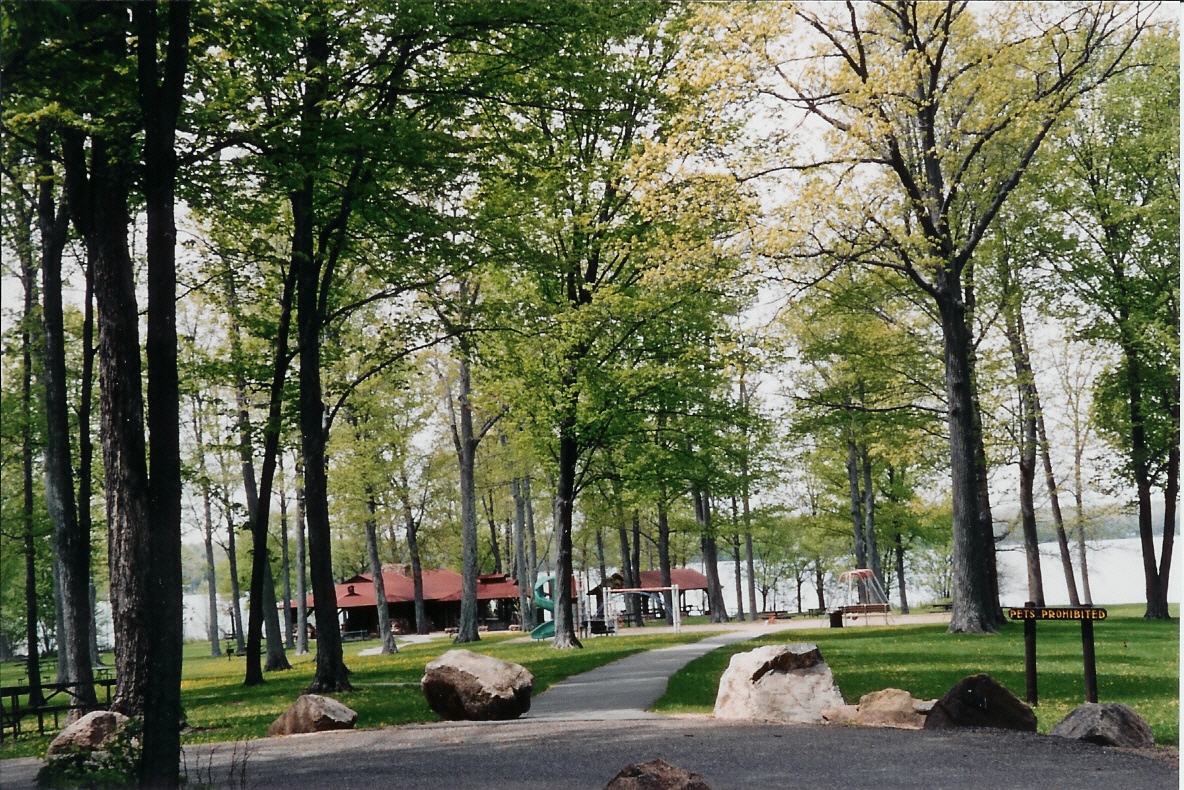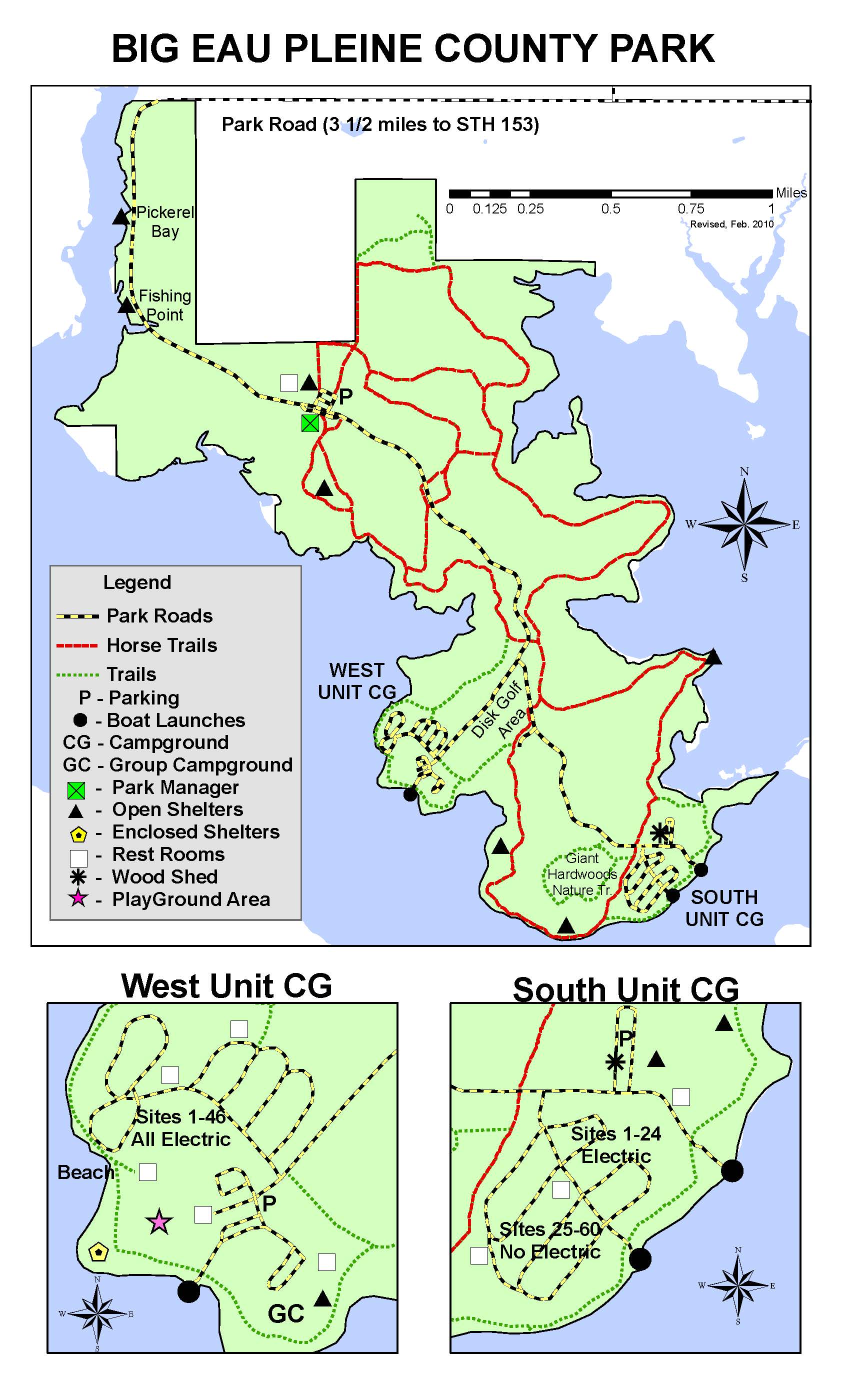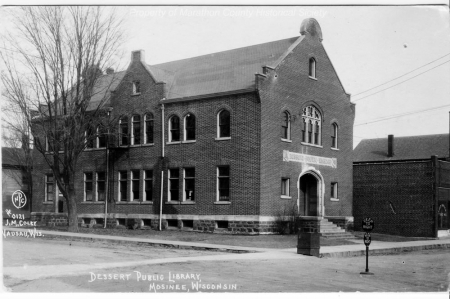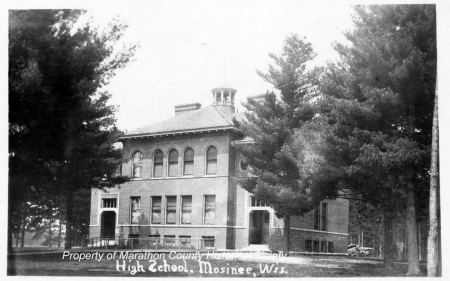Search our Places Database
Mosinee, City of
Return To List of Locations | Back to Search
For more information on this location, please contact our research library.
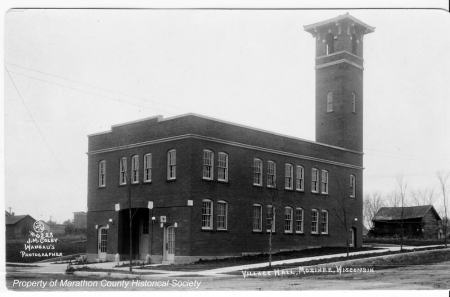
Author:
Mary Moltzan
Location:
T. 27 N. - R. 6 E., Sec. 25 & T. 27 N. - R. 7 E., Sec. 21, 27, 28, 29, 30, 31, 32, 33, 34, and part of 35 & T. 26 N. - R. 7 E., parts of Sections 3 and 4, Township of Mosinee
Founded:
1857
Formallized:
1889
Background:
Population: 1905-530, 2000-4063.
In the early days, the area known as Little Bull Falls, like the rest of the township, was densely forested and inhabited by Indians. The first settlers arrived in about 1850 and settled on the east side of the Wisconsin River near the present Mosinee Paper Company site. The lumber industry was the biggest reason for growth and development in Mosinee.
See 1st Biography
Little Bull Falls was changed to a more "dignified" name, Mosinee, in 1856 as the post office was being moved from Falls City in the east to the west side of the river. A bridge across the river in 1856 allowed settlement on the west side of the river.
First Public Official:
Joseph Dessert
Biography:
Joseph Dessert came to the area as a fur trader in 1844. He entered the logging business with 3 partners in 1849. By 1859, he became the sole owner and controlled the lumber industry in the Mosinee area into the 20th Century. The company closed in 1903 - 04. Joseph Dessert died in 1911 while living with his daughter and son-in-law in Milwaukee.
Post Office Established:
March 18, 1852
About The Post Office:
See Mosinee Township
Railroad:
The coming of the Chicago, Milwaukee & St. Paul railroad allowed the Dessert Lumber Co. to build a planing mill and ship finished lumber by rail.
By the turn of the 20th Century, Joseph Dessert could take pride in the knowledge that his was one of the most productive lumber concerns in the county. At the company's main camp, located in Section 26 of Kronenwetter Township, timber felled in the townships of Kronenwetter, Reid and Guenther was loaded onto standard gauge logging trains and shipped to Mosinee at the rate of up to 50 cars a day.
Churches:
1. St. Paul's Catholic Church - First church, 1878. The present church located on 4th St. was dedicated in 1922.
2. St. James Episcopal Church - The first church, 1884, was located on Main St. The second church was located on 2nd St. and dedicated on January 12, 1919.
3. St. John's Lutheran Church - First church 1904.
4. Mosinee Community Methodist Church - Organized in 1851, the first church was built in 1899 on 5th St.
Schools:
The first school in Mosinee was built C1856.
The second school was a white two story located on 3rd St.
A grade school/high school was built on 5th St. in 1898 with Grades 9 - 12 from 1899 - 1922. The building became a grade school . It.was razed in the 1975 - 76 school year.
Edison Grade School was located directly across Old Hwy. 51 to the east of Mosinee Paper Mills. According to one source, it opened for classes in September 1922. In 1948 or 49, the Edison School was consolidated with the Mosinee District. It closed and its pupils were transported to the Mosinee Grade School.
St. Paul's Catholic School was built in 1938.
Business:
In 1857, there were two stores in Mosinee, Nathen Blake's and J. R. Bruneau's.
Some of the "later" early businesses were: J.Hanowitz and Son - department store
David Roberts and later C. A. Bernier - merchants
Jacob Knoedler - harness shop
C. B. Blair - drug store
Nellie Lutz - milliner
Willis F. Ladu and David Doherty - general store
Hawk Eye Hotel - (burned down)
Douville House (hotel)
Arden Paronto - hardware
Industry:
1. The first sawmill was built by John Moore in 1839 and sold to Joseph Dessert and partners in 1849. Joseph Dessert became the sole owner in 1859. See 1st Biography
2. The Wausau Sulphate and Fibre Company was started in 1910. Its name was later changed to Mosinee Paper Co.
Stories:
In the early days, because farming didn't exist in the area, all supplies had to be brought in from southern Wisconsin and Illinois. All the lumbercamps and mills had to have large supplies, such as pork, flour, coffee, tea, molasses, etc. All had to be brought in by teams of horses over non-existant roads. Many farmers further south did a profitable business bringing farm products north to sell at top prices. On the return trip they loaded their wagons or sleighs with lumber purchased through barter to be sold at higher prices back home. Since there was little money in the pinery, everything was bartered, including labor food and lodging.
Teaming in those days meant hardships from start to finish for man and beast. The roads were never in good condition as a whole, and days were often long, from four in the morning until ten at night. The hotels, or taverns as they were called in those days, were crowded to the utmost limit to accommodate these hardy people as they stopped for the night or their midday meal.
In 1857, the trip to the pinery was made a little easier by the teams unloading at Stevens Point, and the produce was brought up river by the steamer "Northerner" to below the falls at Mosinee. From Mosinee, the goods were carried by teams to Wausau where the people boarded stage coaches for the trip north. In 1858, and for two seasons, a steamer plied the waters between Mosinee and Wausau, but was stopped because it wasn't cost effective. The steamer "Northerner" continued until 1866 between Stevens Point and Wausau.

